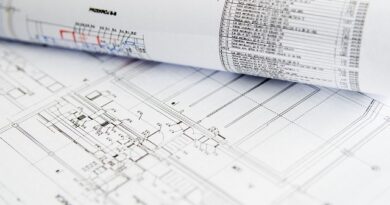Earned Value Analysis and Cost Controlling of the Project
In this post, We are going to discuss Earned Value Analysis with examples and how we can manage the finance of projects.
Introduction
Cost management and control systems have a life cycle that can be defined as per the below phases. Phase 1 – Planning and Building a project price Phase 2 – Work authorization and release Phase 3 – Cost Data Collection and Reporting Phase 4 – Cost Accounting Phase 5 – Customer and Management reporting

Earned Value Analysis
Abbreviations
BCWS: Budgeted Cost of Work Scheduled (Planned or Estimated) BCWP: Approved work (Earned Value. % of BCAC) ACWP: Actual Cost of Work Performed (Cost tracked from real work) BCAC: Budgeted Cost At Completion (Planned or Estimated) AQWP: Actual Quantity of Work Performed (measured at the field) BQAC: Budgeted Quantity At Completion (Planned or Estimated) ECAC: Estimated Cost At Completion
Earned Value
Earned value is the accepted technique for monitoring and tracking project progress. the concept of earned value revolves around these three measures. Earned Value analysis is an important subject in construction financial management and needs to be monitored properly to ensure their will be no cost overruns.
Cost Variance
Cost and schedule variance are the two primary measures of the project progress. They can be determined by: Cost variance, CV = BCWP – ACWP
Schedule Variance
Schedule Variance, SV = BCWP -BCWS
- If CV and SV = 0; then the project is on track
- If C and SV = +; then the project is under budget and ahead of schedule
- If CV and SV = -; then the project is over budget and behind schedule
Example For Better Understanding
You planned to be finished with Task A today. The scheduled cost of the task was $1,000. You have actually spent $900 to date but you are only 90% complete. What are the cost and schedule variances for Task A? CV = BCWP – ACWP = 900 – 900 = 0 SV = BCWP – BCWS = 900 – 1,000 = -100
Result
Task is on budget but behind schedule
Cost Performance & Schedule Performance Index
Two indices that are useful for communicating progress status are the Cost Performance Index and the Schedule Performance Index. They are determined by: Cost Performance Index: The cost efficiency factor represents the relationship between the actual costs expended and the value of the physical work performed. CPI = BCWP/ACWP Schedule Performance Index: The planned schedule efficiency factor represents the relationship between the value of the initial planned schedule and the value of the physical work performed. SPI = BCWP/BCWS If CPI and SPI = 1, then the project is on budget and on schedule. < 1, then the project is over budget and behind schedule. > 1, the the project is under budget and ahead of schedule
Example
The BCWS for a task is $1,000, the ACWP is $900, and the BCWP is $900. What are the CPI and SPI for this task? CPI = BCWP/ACWP = 900/900 = 1.00 SPI = BCWP/BCWS = 900/1,000 = 0.90 Project is on budget but behind schedule.
Estimate At Completion
The estimate at completion (EAC) is a projection of the final costs of work at project completion. EAC = BAC/CPI The project manager should recalculate the EAC each time project progress is measured. Budget at completion (BAC) – Original estimate of completed project costs CPI = Cost Performance Index For example, the original estimate of the project costs is $100,000. If the BCWP for the project to date is $8,000 and the ACWP is $9,300, what is the new EAC for the project? CPI = BCWP/ACWP = 8,000/9,300 = 0.86 For example the original estimate of the project costs is $100,000. If the BCWP for the project to date is $8,000 and the ACWP is $9,300, what is the new EAC for the project? Solution: CPI = BCWP/ACWP = 8,000/9,300 = 0.86
Estimate To Complete
Estimate to Complete (ETC) or the amount of money needed to fund the project to completion is calculated by: ETC = EAC-ACWP
Conclusion
In conclusion, Earned Value Analysis is a powerful project management tool that enables project managers to track project performance against a set baseline. By measuring both the schedule and cost performance of a project, project managers can identify potential issues early on and take corrective action to keep the project on track. While implementing Earned Value Analysis can be complex and time-consuming, the benefits in terms of improved project performance and cost control make it well worth the effort. With careful planning and execution, project managers can use Earned Value Analysis to achieve project success.




